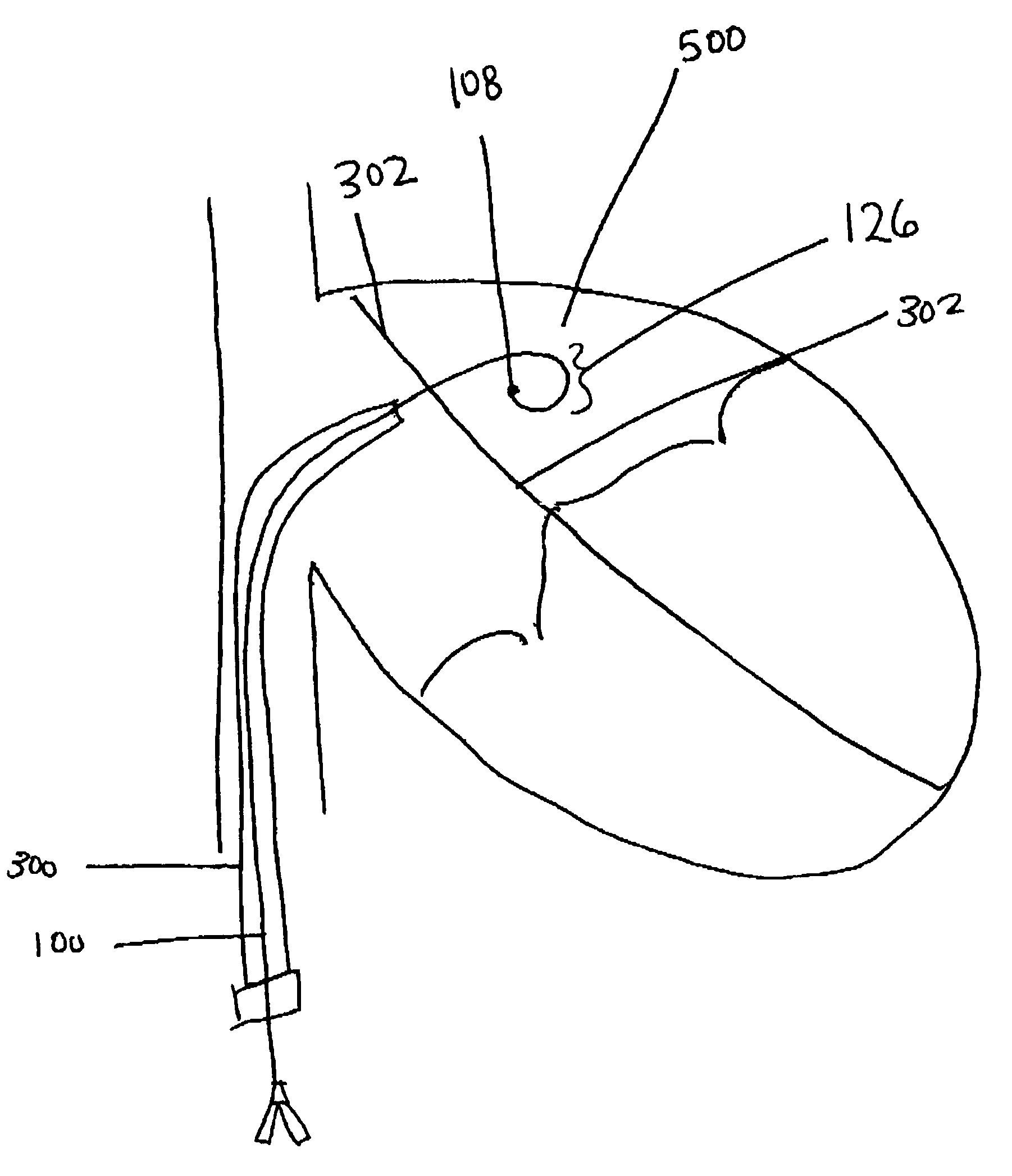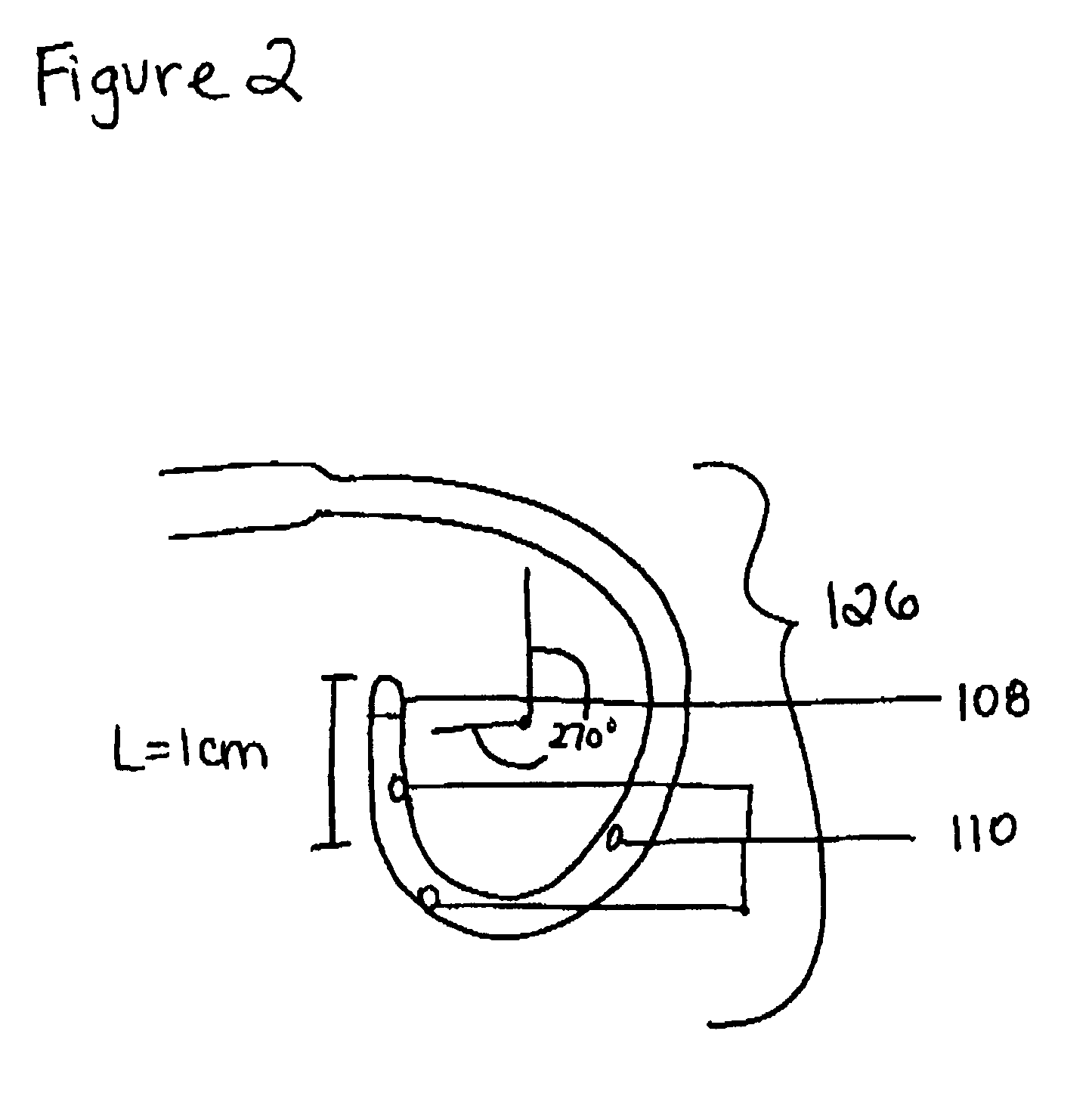Surgical perforation device with curve
a perforation device and curve technology, applied in the field of creating perforations in materials, can solve the problems of significant forward momentum of needles used in this procedure, damage to vessel walls, and high rigidity of needles, and achieve the effect of reducing the risk of unintentional injury to other areas of the hear
- Summary
- Abstract
- Description
- Claims
- Application Information
AI Technical Summary
Benefits of technology
Problems solved by technology
Method used
Image
Examples
Embodiment Construction
[0030]FIG. 1 illustrates a preferred embodiment of a transseptal device 100 in accordance with the invention. Transseptal device 100 comprises an elongate member 102 having a distal region 104, and a proximal region 106. The Distal region 104 is adapted to be inserted within and along a lumen of a body of a patient, such as a patient's vasculature, and maneuverable therethrough to a desired location proximate to septal tissue to be cut.
[0031]The elongate member 102 is typically tubular in configuration, having at least one lumen extending from the proximal region 106 to the distal region 104. Elongate member 102 is preferably constructed of a biocompatible polymer material that provides column strength. The elongate member 102 is sufficiently stiff to permit a soft guiding catheter to be easily advanced over the transseptal device 100 and through a perforation. Examples of suitable materials for the tubular portion of elongate member 102 are polyetheretherketone (PEEK), and polyimid...
PUM
 Login to View More
Login to View More Abstract
Description
Claims
Application Information
 Login to View More
Login to View More - R&D
- Intellectual Property
- Life Sciences
- Materials
- Tech Scout
- Unparalleled Data Quality
- Higher Quality Content
- 60% Fewer Hallucinations
Browse by: Latest US Patents, China's latest patents, Technical Efficacy Thesaurus, Application Domain, Technology Topic, Popular Technical Reports.
© 2025 PatSnap. All rights reserved.Legal|Privacy policy|Modern Slavery Act Transparency Statement|Sitemap|About US| Contact US: help@patsnap.com



